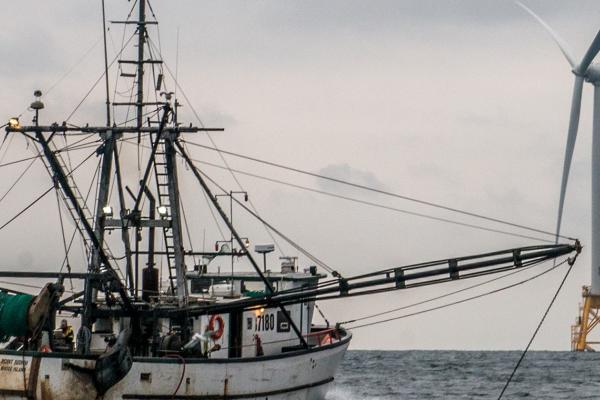Overview
At BOEM, it’s our mission to ensure that offshore wind energy development is done in an environmentally and economically responsible way.
We remain committed to a transparent process, one that avoids or reduces conflicts with other ocean users – including recreational and commercial fishers.
Questions? Reach out to the Community Engagement Team and learn more about our engagement with fisheries.
Sign up for BOEM updates on offshore wind.
Leasing Process
BOEM uses a multi-phase process to grant access to ocean areas suitable for wind development that can span at least 10 years, if not more, from the start of the leasing process.
- Phase 1: BOEM identifies potential areas for wind energy leasing.
- Phase 2: BOEM holds a lease sale, a type of auction where companies bid for the right to submit a project plan for BOEM’s review to potentially develop in the area.
- Phase 3: Companies that win leases conduct surveys and studies to learn more about their lease areas. They then draw up project plans (referred to as Construction and Operations Plans) for prospective offshore wind facilities and submit those plans to BOEM for approval.
- Phase 4: BOEM conducts extensive environmental and technical reviews to determine possible impacts and how to mitigate them before approving, modifying, or disapproving the plans.
After the first three phases are completed, construction can finally begin.
Local knowledge and feedback are essential to our process, and throughout the renewable energy leasing process there are multiple opportunities to provide feedback to BOEM -- from identifying wind energy leasing areas to providing comment on draft environmental analysis.
Public input is essential to the development of wind energy areas! Tips to Provide Helpful Comments explains how public input helps the BOEM team’s planning.
Transmission Lines
Access to offshore renewable energy requires a robust energy transmission infrastructure. BOEM, in partnership with other government agencies, is working towards a smart approach to transmission so that this power can be delivered to shore with reduced impacts to the local communities, ocean users, as well as cultural and ocean resources.
Recently BOEM and the Department of Energy (DOE) collaborated on a series of monthly transmission workshops to discuss transmission-related challenges and identify potential solutions. The video below is the latest in this series.
BOEM and DOE, during the Atlantic Offshore Wind Transmission Stakeholder Workshop discussed the agencies’ findings from the Atlantic Offshore Wind Transmission Study.
Marine Mammals
Environmental stewardship is integral to BOEM’s mission to oversee responsible development of our Nation’s offshore resources. As the nation moves forward with offshore wind energy development, we will continue to use the best science, knowledge, and law to inform our environmental analyses and policy decisions.
Working in consultation with National Oceanic and Atmospheric Administration Fisheries, BOEM has developed strong requirements for geophysical surveys (primarily acoustic) and vessel strike avoidance. All holders of offshore wind leases that undergo geophysical survey activity must have independent protected species observers to ensure that survey operations are conducted safely and minimize the possibility of vessel strikes, often these observers are fishermen who are familiar with the area. In addition, each survey must establish an “acoustic exclusion zone” that is clear of any marine mammals and sea turtles for a certain amount of time before acoustic sound sources can operate.
Any interactions with protected species must be immediately reported to BOEM and NOAA Fisheries. Here are some fast facts on how BOEM keeps marine mammals protected as we develop and conduct offshore wind energy activities.
BOEM scientists presented during the National Academies Science, Engineering, and Medicine Standing Committee on Environmental Science and Assessment for Ocean Energy Management’s Spring Meeting 2023.
Floating Technology
The deep waters of America’s Outer Continental Shelf require floating offshore wind technology – a technology already in common use elsewhere – will be used to meet the energy goals of the nation.
The U.S. Department of Energy’s (DOE) Floating Offshore Wind Shot is an initiative to help usher in a clean energy future by driving U.S. leadership in floating offshore wind design, development, and manufacturing.
It is one of the DOE’s “Energy Earthshots” Initiative to tackle key remaining technical challenges in reaching U.S. climate goals while creating jobs and economic opportunities for U.S. communities.
More information can be found on DOE’s website.
The National Renewable Energy Laboratory provides an overview of floating offshore wind technology during the State of Maine’s Offshore Wind Webinar Series #1: Current Offshore Wind Floating Technology.



